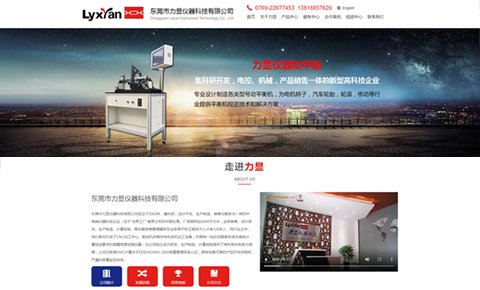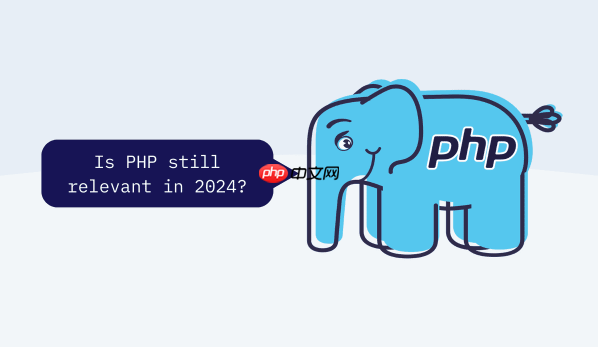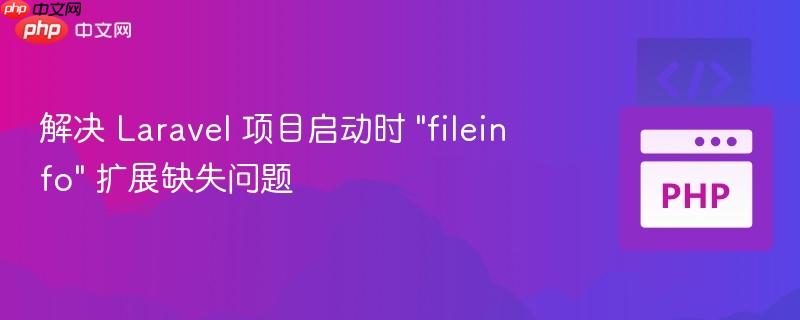设置基于Apache的URL重写路由,通过.htaccess将请求统一指向index.php;2. 在PHP中解析HTTP方法和请求数据,使用$_SERVER['REQUEST_METHOD']判断操作类型,结合php://input获取JSON格式的POST/PUT数据;3. 实现用户资源的增删改查:GET获取用户列表或单个用户,POST创建、PUT更新、DELETe删除,并进行输入验证;4. 返回标准HTTP状态码如200、201、400、404,并设置Content-Type: application/json头部;5. 使用类封装API逻辑,按MVC模式分离控制器与模型,提升代码可维护性和扩展性。

To create a RESTful API using PHP for web services, you need to set up routing, handle HTTP methods, and return JSON responses. Here's how to implement it step by step:
The operating environment of this tutorial: MacBook Pro, macOS Sonoma
1. Set Up Basic Routing with URL Rewriting
Routing allows your application to respond to different URLs and HTTP methods. Using Apache's mod_rewrite, you can route all requests through a single entry point like index.php.
Create a .htaccess file in the root directory with the following content:RewriteEngine On
立即学习“PHP免费学习笔记(深入)”;
RewriteCond %{REQUEST_FILENAME} !-f
RewriteCond %{REQUEST_FILENAME} !-d
RewriteRule ^(.*)$ index.php?url=$1 [QSA,L]
This configuration forwards all non-file and non-directory requests to index.php, making clean URLs possible.2. Handle HTTP Methods and Request Data
Your API must respond appropriately to GET, POST, PUT, and DELETE requests. Use PHP’s superglobals to access request data and method type.
 AppMall应用商店
AppMall应用商店 AI应用商店,提供即时交付、按需付费的人工智能应用服务
 56 查看详情
56 查看详情  Retrieve the requested endpoint using $_GET['url'] after URL rewriting. Detect the HTTP method via $_SERVER['REQUEST_METHOD']. For POST and PUT requests, parse raw input using php://input to get JSON data.
Retrieve the requested endpoint using $_GET['url'] after URL rewriting. Detect the HTTP method via $_SERVER['REQUEST_METHOD']. For POST and PUT requests, parse raw input using php://input to get JSON data.$data = json_decode(file_get_contents('php://input'), true);
3. Implement CRUD Operations with a Sample Resource
Define logic for managing a resource such as "users". Each operation corresponds to an HTTP method and interacts with data storage.
GET /users — return a list of users in JSON format. GET /users/1 — return a single user by ID. POST /users — validate incoming data and add a new user. PUT /users/1 — update user details based on ID. DELETE /users/1 — remove a user from storage.Always validate input and sanitize output to prevent security vulnerabilities.
4. Return Proper HTTP Status Codes and Headers
Correct status codes help clients understand the result of their requests. Set headers explicitly before sending any response body.
Use http_response_code(200) for success, 201 for created, 400 for bad request, and 404 for not found. Set content type to JSON using header('Content-Type: application/json');. Ensure no whitespace or output precedes header() calls.Incorrect headers can break API consumption; always test response formats.
5. Use Classes to Organize API Logic
Encapsulate functionality into classes for better maintainability. Create a base controller and separate models for each resource.
Define a class like UserAPI with methods for each action (getUser, createUser, etc.). Instantiate the class only when the route matches the intended resource. Separate database logic into a Model class to follow MVC principles.Organized code improves scalability and team collaboration.
以上就是web服务怎么用php_PHP Web服务(RESTful/API)实现方法教程的详细内容,更多请关注php中文网其它相关文章!












